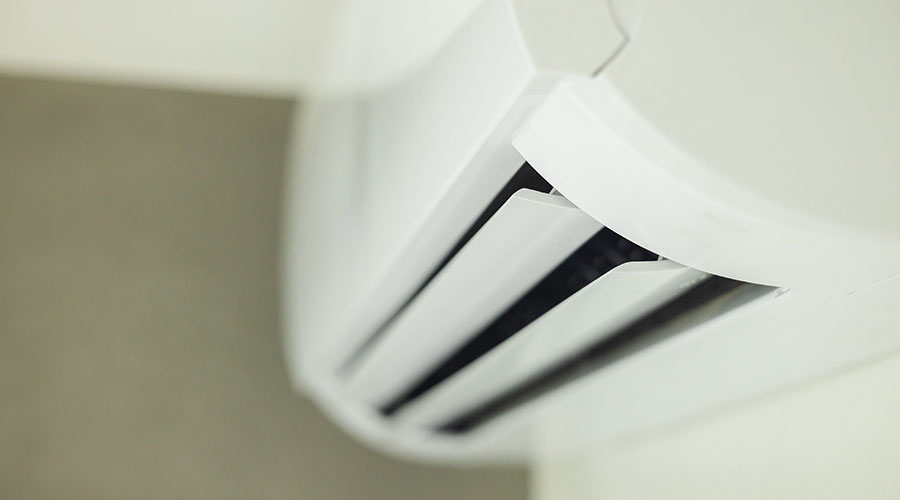 Chris Walinski, building operations manager, Munich Reinsurance AmericaPhoto: Laurie Dewitt, Pure Light images
Chris Walinski, building operations manager, Munich Reinsurance AmericaPhoto: Laurie Dewitt, Pure Light images Health and Wellness: How Research Influences Open Office Design
Walinski doesn't attempt to prove the science, but using evidence-based design ideas helps make occupants in open office space healthy, happy, and more productive.
Walinski always attempts to incorporate the most current science into the justifications for what he’s doing. He cites studies by Harvard, Syracuse, and SUNY Medical to show that keeping carbon dioxide levels below 600 ppm in space improves cognitive function, innovative thinking, and performing under pressure. As well, workers reported 30 percent fewer health issues than in a conventional office.
The idea that sickness spreads more quickly and more often is one oft-cited objection to open office. But it’s simply not true. Occupants have a better chance of picking up germs from elevator buttons, door handles, or other frequently touched surfaces than from airborne germs. That’s not to mention buildings that are poorly ventilated — the lack of ventilation in the office makes the problem worse.
“We aren’t trying to prove the science behind the studies regarding health and cognitive functions, but we are happy to say we have spaces full of comfortable people with an improved perception of the work environment,” he says.
Furthermore, “by adding the less constrictive nature of the open space floor plan to the increased distribution of fresh air and the more comfortable temperature settings, we are striving to come close to replicating the feeling of being outside on a perfect weather day,” he says.
Adding to that perception is a liberal use of daylighting in the space. The goal is for everyone sitting at a workstation or walking through the space to have a view of the outside. The science regarding daylighting and views is all but settled — humans are happier and healthier when they have access to natural daylight and perceive a connection to nature. “Again, we aren’t looking to prove the science, but improved outside views remain one of the top positive feedback measures we hear from our open space designs,” says Walinski.
These elements of occupant comfort also feed into Walinski’s goal of supporting occupant health and wellness. Though they have not certified space with the WELL Building Standard, Walinski says they’re using many of the rating system’s standards and strategies in their open office space. At select office locations, they’re offering discounts on healthier food and a fitness center free to all employees. They supplement natural light with light tuned to circadian rhythms — Walinski cites a Harvard Health study that shows properly tuned light helps occupants get better sleep at night. And of course better-rested occupants are healthier and more productive.
“Being concerned about the health and wellness of our employees is what helps our facilities team contribute to improving the overall health and wellness of the company,” says Walinski. “There are a lot of pieces to the puzzle, but as they come together you get a really great picture of how many ways open space as part of a holistic program can provide a lot of potential benefits and be a big part of a company’s culture.”
Email comments and questions to greg.zimmerman@tradepress.com
Related Topics:


















